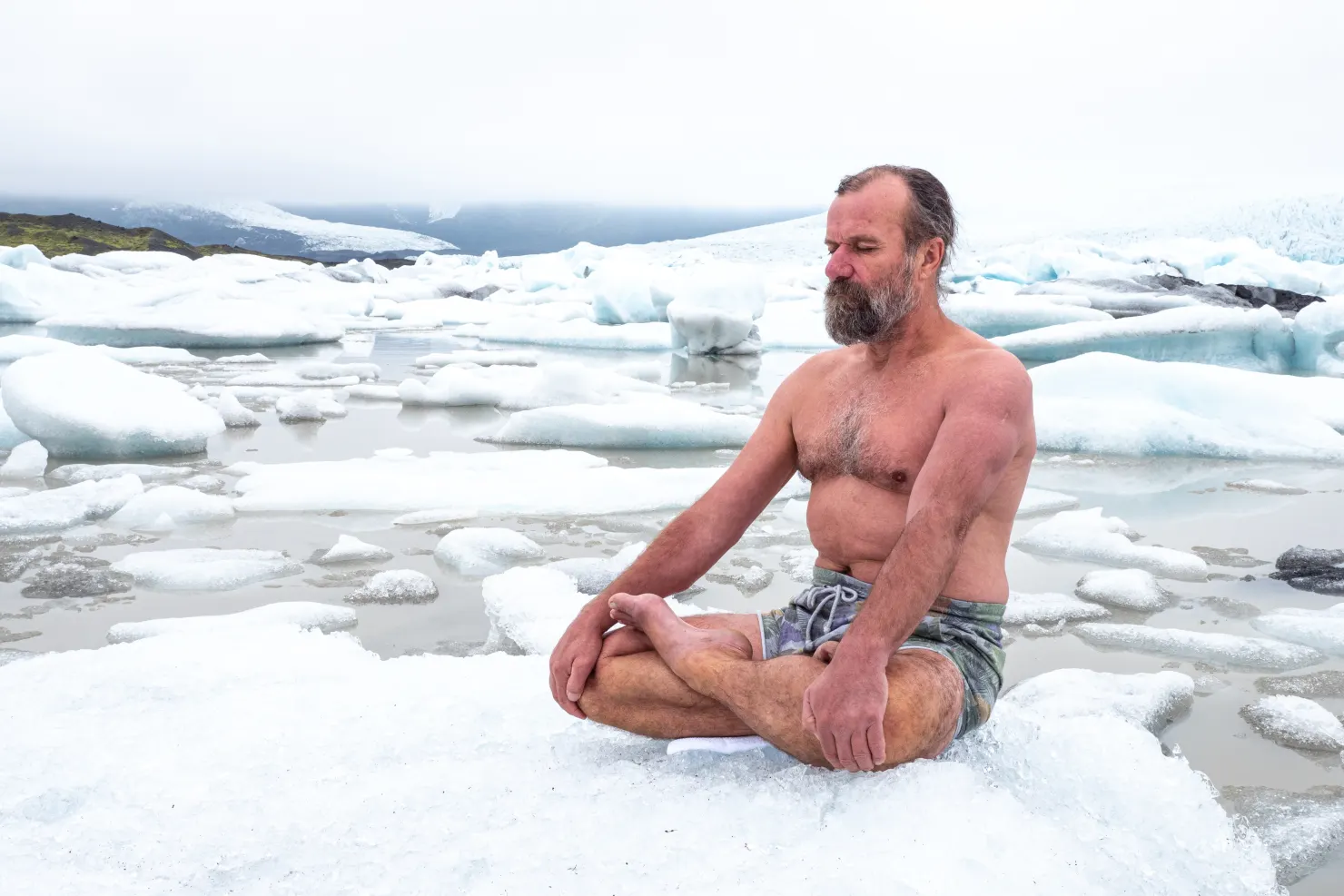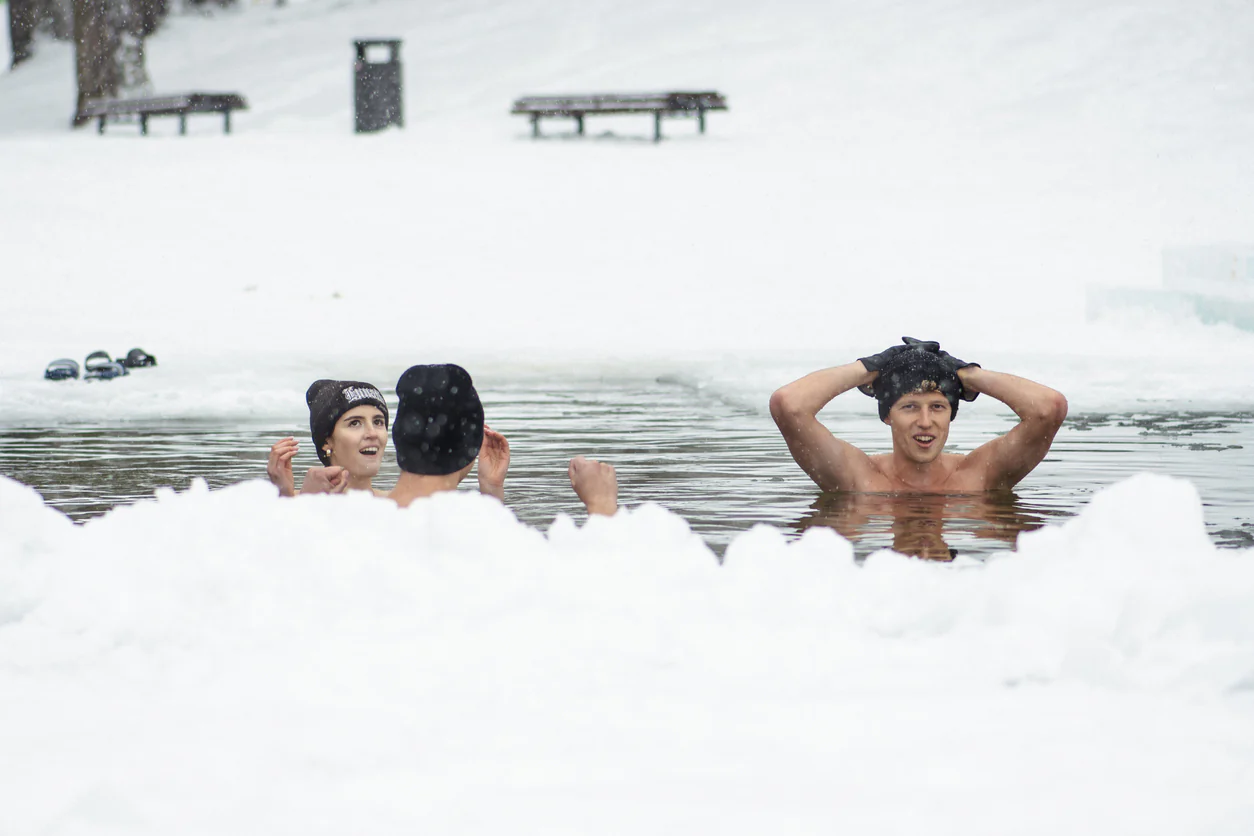Disclaimer: This article is for informational purposes only and is not intended as medical advice. Please consult with a healthcare professional before starting any new health or fitness routine, especially if you have any underlying health conditions.
Cold plunges have gained popularity for their numerous health benefits, from reducing inflammation to boosting mental clarity. However, preparing your body and mind for the cold can enhance these benefits and make the experience more manageable. One effective preparation technique is breathwork, specifically the Wim Hof Method. Let’s explore how breathwork can enhance your cold plunge routine and provide a step-by-step guide to the Wim Hof Method.
The Power of Breath Work
Breathwork involves controlled breathing techniques designed to improve physical, mental, and emotional well-being. Before a cold plunge, breathwork can:
- Calm the Mind: Focused breathing can reduce anxiety and stress, helping you approach the cold plunge with a calm and centered mindset.
- Enhance Oxygenation: Deep breathing increases oxygen levels in the body, improving circulation and energy levels.
- Regulate Body Temperature: Breathwork can help prepare your body for the shock of cold water by stabilizing your internal temperature.
- Improve Focus: Controlled breathing sharpens mental clarity and focus, making it easier to handle the discomfort of cold immersion.
The Wim Hof Method: Step-by-Step Guide
The Wim Hof Method, developed by Dutch extreme athlete Wim Hof, combines specific breathing techniques with cold exposure and meditation. Here’s how you can practice the Wim Hof Method before your cold plunge:
1. Find a Comfortable Position
Sit or lie down in a comfortable position where you can fully relax. Ensure that you’re in a safe environment where you can focus without distractions.
2. Practice Deep Breathing
- Inhale: Take a deep breath in through your nose or mouth, filling your lungs completely.
- Exhale: Let the breath go through your mouth, releasing it without force.
- Repeat this cycle 30 times. You may feel lightheaded or tingly—this is normal.
3. Retention Phase
- After the 30th breath, inhale deeply and let the air out completely.
- Hold your breath after exhaling for as long as you can without discomfort. This is known as the retention phase.
- When you feel the urge to breathe, take a deep breath in and hold it for 15 seconds, then release.
4. Repeat
- Repeat the entire process for 3-4 rounds. With each round, you may notice an increase in your breath-holding capacity and a deeper sense of relaxation.
5. Cold Plunge
After completing the breathwork, you are ready for the cold plunge. Enter the cold water slowly, focusing on maintaining steady, deep breaths. The breathwork will help you remain calm and manage the initial shock of the cold.
Benefits of Combining Breathwork and Cold Plunges
1. Enhanced Resilience: The combination of breathwork and cold exposure can build physical and mental resilience, helping you handle stress more effectively.
2. Improved Circulation: Deep breathing before a cold plunge boosts circulation, enhancing the body’s ability to warm itself during and after the cold exposure.
3. Increased Endorphin Release: Both breath work and cold plunges stimulate the release of endorphins, improving mood and reducing anxiety.
4. Better Focus and Clarity: The mindfulness required for breath work carries over into the cold plunge, promoting mental clarity and focus.
Disclaimer: This article is for informational purposes only and is not intended as medical advice. Please consult with a healthcare professional before starting any new health or fitness routine, especially if you have any underlying health conditions.
Cold plunges have gained popularity for their numerous health benefits, from reducing inflammation to boosting mental clarity. However, preparing your body and mind for the cold can enhance these benefits and make the experience more manageable. One effective preparation technique is breathwork, specifically the Wim Hof Method. Let’s explore how breathwork can enhance your cold plunge routine and provide a step-by-step guide to the Wim Hof Method.
The Power of Breath Work
Breathwork involves controlled breathing techniques designed to improve physical, mental, and emotional well-being. Before a cold plunge, breathwork can:
- Calm the Mind: Focused breathing can reduce anxiety and stress, helping you approach the cold plunge with a calm and centered mindset.
- Enhance Oxygenation: Deep breathing increases oxygen levels in the body, improving circulation and energy levels.
- Regulate Body Temperature: Breathwork can help prepare your body for the shock of cold water by stabilizing your internal temperature.
- Improve Focus: Controlled breathing sharpens mental clarity and focus, making it easier to handle the discomfort of cold immersion.
The Wim Hof Method: Step-by-Step Guide
The Wim Hof Method, developed by Dutch extreme athlete Wim Hof, combines specific breathing techniques with cold exposure and meditation. Here’s how you can practice the Wim Hof Method before your cold plunge:
1. Find a Comfortable Position
Sit or lie down in a comfortable position where you can fully relax. Ensure that you’re in a safe environment where you can focus without distractions.
2. Practice Deep Breathing
- Inhale: Take a deep breath in through your nose or mouth, filling your lungs completely.
- Exhale: Let the breath go through your mouth, releasing it without force.
- Repeat this cycle 30 times. You may feel lightheaded or tingly—this is normal.
3. Retention Phase
- After the 30th breath, inhale deeply and let the air out completely.
- Hold your breath after exhaling for as long as you can without discomfort. This is known as the retention phase.
- When you feel the urge to breathe, take a deep breath in and hold it for 15 seconds, then release.
4. Repeat
- Repeat the entire process for 3-4 rounds. With each round, you may notice an increase in your breath-holding capacity and a deeper sense of relaxation.
5. Cold Plunge
After completing the breathwork, you are ready for the cold plunge. Enter the cold water slowly, focusing on maintaining steady, deep breaths. The breathwork will help you remain calm and manage the initial shock of the cold.
Benefits of Combining Breathwork and Cold Plunges
1. Enhanced Resilience: The combination of breathwork and cold exposure can build physical and mental resilience, helping you handle stress more effectively.
2. Improved Circulation: Deep breathing before a cold plunge boosts circulation, enhancing the body’s ability to warm itself during and after the cold exposure.
3. Increased Endorphin Release: Both breath work and cold plunges stimulate the release of endorphins, improving mood and reducing anxiety.
4. Better Focus and Clarity: The mindfulness required for breath work carries over into the cold plunge, promoting mental clarity and focus.
Breathe Deep, Plunge Deep
Integrating the Wim Hof Method into your cold plunge routine can amplify the benefits and make the experience more manageable and enjoyable. Remember, the key is consistency and mindful practice. Always listen to your body and consult with a healthcare professional if you have any concerns about your health.
By preparing your mind and body with breathwork, you can enhance your cold plunge experience, reaping the rewards of improved physical health and mental well-being. So take a deep breath, dive into the chill, and discover the powerful synergy of breath work and cold immersion.
Integrating the Wim Hof Method into your cold plunge routine can amplify the benefits and make the experience more manageable and enjoyable. Remember, the key is consistency and mindful practice. Always listen to your body and consult with a healthcare professional if you have any concerns about your health.
By preparing your mind and body with breathwork, you can enhance your cold plunge experience, reaping the rewards of improved physical health and mental well-being. So take a deep breath, dive into the chill, and discover the powerful synergy of breath work and cold immersion.




